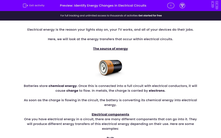Electrical energy is the reason your lights stay on, your TV works, and all of your devices do their jobs.
Here, we will look at the energy transfers that occur within electrical circuits.
The source of energy

Batteries store chemical energy. Once this is connected into a full circuit with electrical conductors, it will cause charge to flow. In metals, the charge is carried by electrons.
As soon as the charge is flowing in the circuit, the battery is converting its chemical energy into electrical energy.
Electrical components
One you have electrical energy in a circuit, there are many different components that can go into it. They will produce different energy transfers of this electrical energy depending on their use. Here are some examples:
Bulb
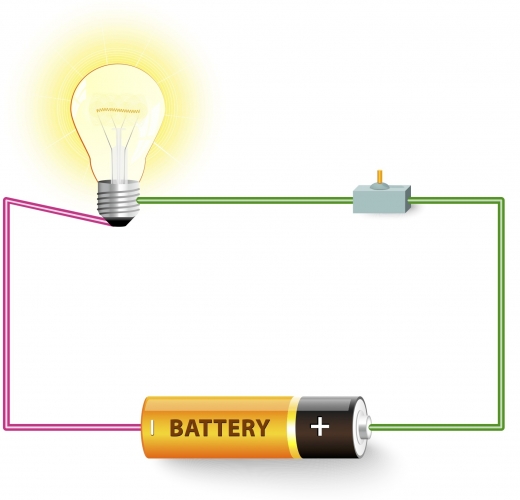
We will start with the one that everyone is familiar with. A filament bulb, when connected in a circuit, converts the electrical energy to light. A lot of its energy will be wasted as heat.
LED
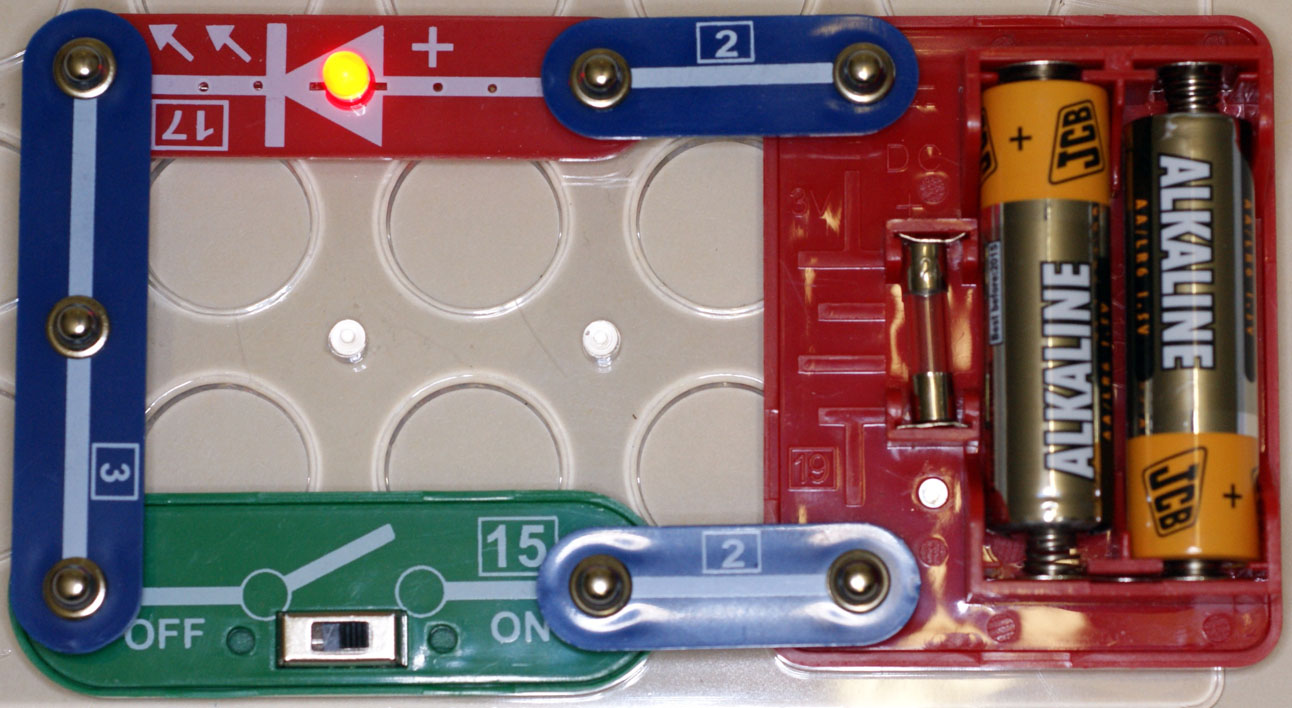
LED stands for light emitting diode. In the circuit diagram above, the little glowing yellow light is an LED. You will have seen a lot of LEDs in real life without realising - the little red light you often see on a device such as a TV when it is in standby mode is an LED. They can be manufactured to be many different colours. Some LEDs can even change colour.
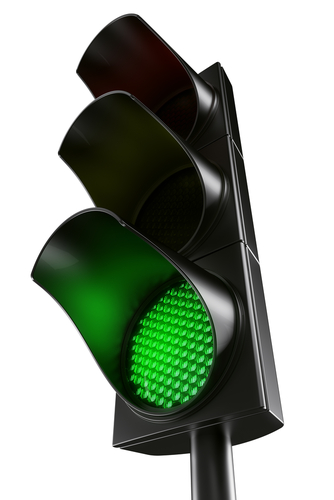
Like a filament bulb, an LED will transfer the electrical energy into light energy. The difference is that LEDs waste much less energy as heat, so they are more efficient. The other advantage of LEDs against filament bulbs is that LEDs are much smaller, and can therefore be arranged together in parallel to make one big light. (You may have seen traffic lights that look like they are made of lots of little dots instead of one big bulb). The advantage is, if one LED stops working, the rest of the light stays on. On the other hand, when one single filament bulb breaks, the whole light stops working.
Motor
A motor transfers electrical energy into kinetic energy. Its wasted energy is heat and sound.
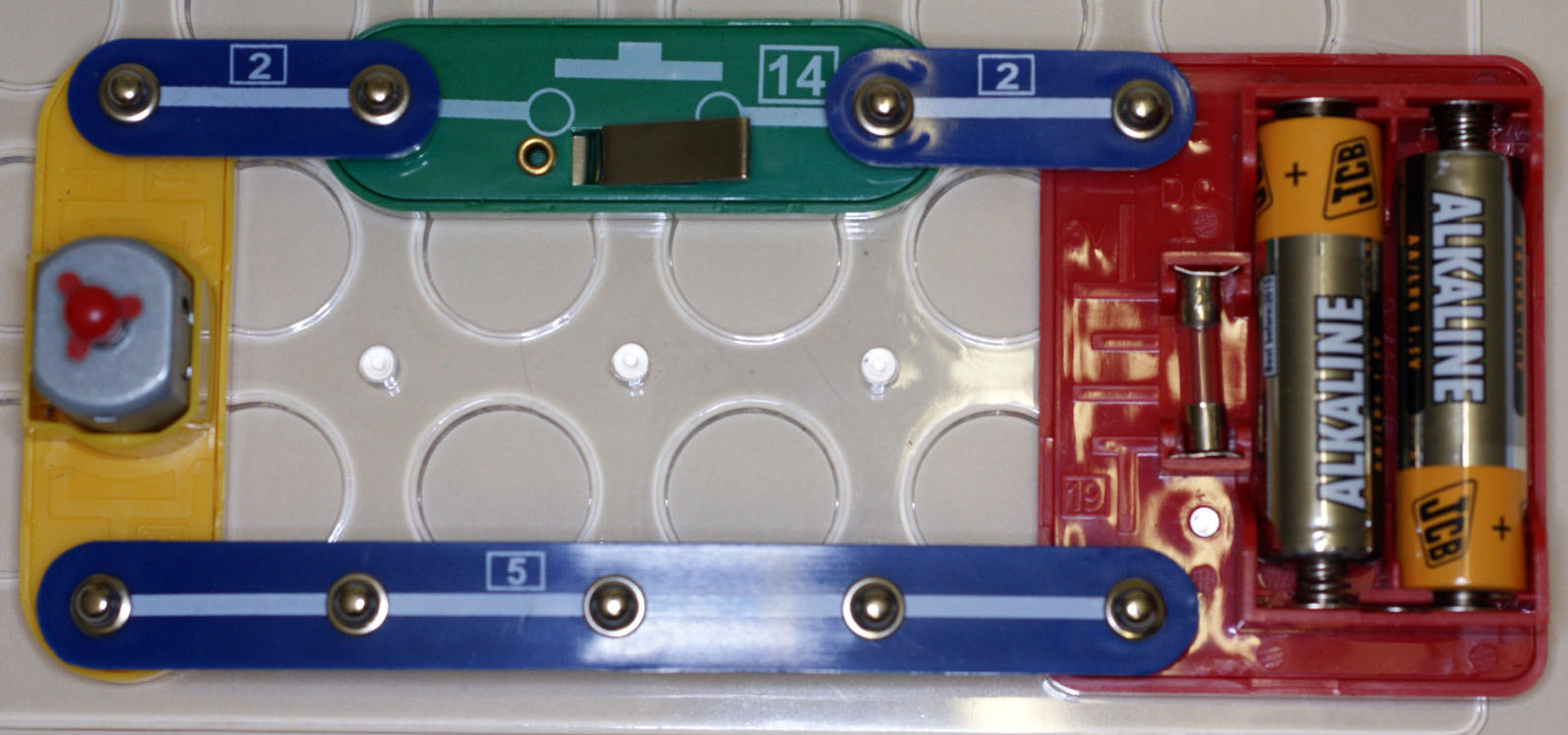
In the circuit above, the little device on the left hand side is a motor. It spins when the electricity flows.
The motor effect occurs when you rotate a coil of wire in a magnetic field. Electric currents actually produce their own magnetic fields, and when these interact with the magnetic field of a magnet, forces are produced, which causes the coil to spin.
In your home, anything that uses electrical energy to produce movement, no matter how small, will contain a motor of some sort. A few examples are electric toothbrushes, vacuum cleaners, dishwashers, and fridges. (The motor inside your fridge is the reason it hums).
Resistor
Finally, we get to resistors. The circuit below contains a resistor, mounted on the piece of plastic with the zig-zag.
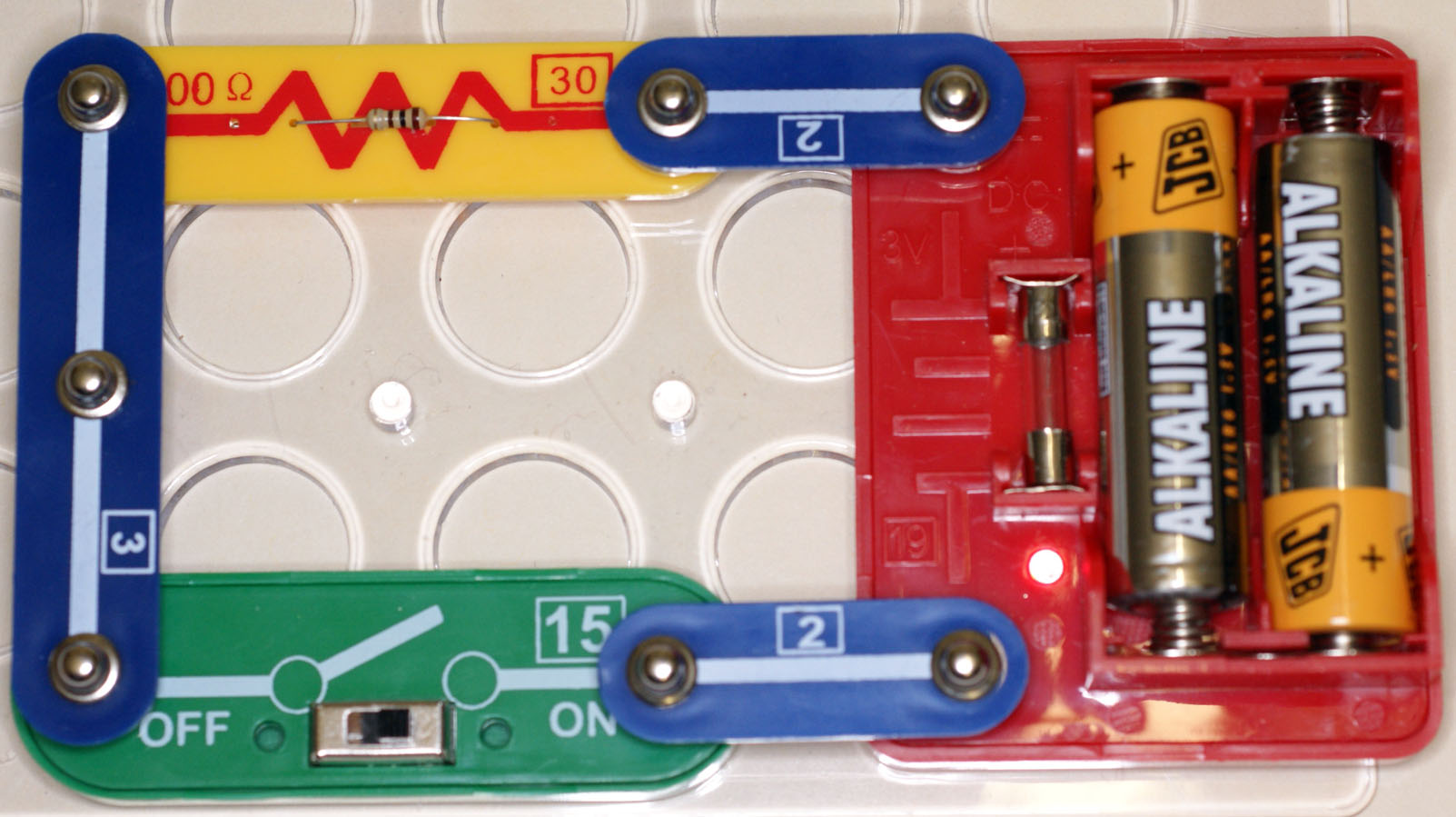
These will transfer some of the electrical energy into heat, so that the current decreases. These are put into circuits to control the current and allow the device to operate safely and correctly.
Now that you have seen the energy transfers that can occur in common circuits, have a go at testing your knowledge on this topic.

